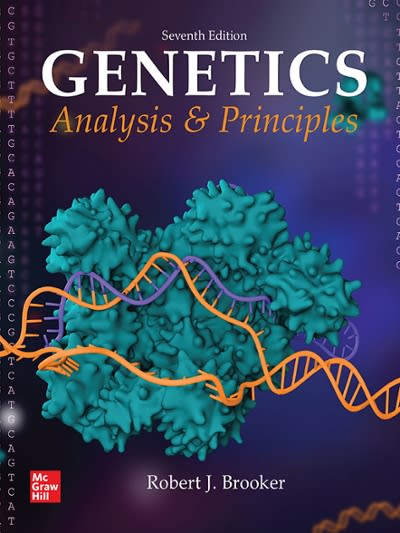In experimental question E3, an electrophoretic mobility shift assay can be used to determine if a protein
Question:
In experimental question E3, an electrophoretic mobility shift assay can be used to determine if a protein binds to DNA. This method can also determine whether a protein binds to RNA. For each of the following combinations, would you expect the movement of the RNA through the gel to be slowed down due to the binding of the protein?
A. mRNA from a gene that is terminated in a ρ-independent manner plus ρ protein
B. mRNA from a gene that is terminated in a ρ-dependent manner plus ρ protein
C. P re-mRNA from a protein-encoding gene that contains two introns plus the snRNP called U1
D. Mature mRNA from a protein-encoding gene that contains two introns plus the snRNP called U1
Question E3
An electrophoretic mobility shift assay (EMSA) can be used to study the binding of proteins to a segment of DNA.When a protein binds to a segment of DNA, it slows the movement of the DNA through a gel, so the DNA appears at a higher point in the gel, as shown in the following example:

Lane 1: 900-bp fragment alone
Lane 2: 900-bp fragment plus a protein that binds to the 900-bp fragment
In this example, the segment of DNA is 900 bp in length, and the binding of a protein causes the DNA to appear at a higher point in the gel. Assuming that this 900-bp fragment of DNA contains a core promoter of a eukaryotic protein-encoding gene, draw a gel
that shows the relative locations of the 900-bp fragment under the following conditions:
Lane 1: 900 bp plus TFIID
Lane 2: 900 bp plus TFIIB
Lane 3: 900 bp plus TFIID and TFIIB
Lane 4: 900 bp plus TFIIB and RNA polymerase II
Lane 5: 900 bp plus TFIID, TFIIB, and RNA polymerase II/TFIIF
Step by Step Answer:





